
Medically reviewed by Dr. John Rosdeutscher – Written by Sine Thieme
At Nashville Hair Doctor, we perform both hair transplants and beard transplants. While the recovery after a hair restoration procedure progresses in similar ways for both scalp and facial hair, this article is meant to give our beard patients a better idea of what to expect during their recovery and growth cycle (Read Timeline of Hair Growth after NeoGraft for the same information on hair transplants).
Overall, your recovery after a hair restoration procedure is expected to last 12 months, with good results typically visible at 6 months. The first 3 months are the hardest, as there is often little growth this early in the recovery.
At Nashville Hair Doctor, we want to make sure we give you all the information upfront so that you won’t be disappointed. Below we show you the typical beard transplant recovery timeline, including sample pictures of several of our own patients.
First 2 Weeks After Beard Transplant
Even though they look similar right after a hair transplantation procedure, the donor and recipient areas recover very differently. Let’s look at the donor area first.
Growth in the Donor Area
The donor area is what we call the area where the hair to be used for filling in your beard is extracted from. Just like with any hair restoration, this is typically the area at the back and sides of your head. This hair begins to grow immediately after the transplant, since it doesn’t experience any shock loss. It’s just a matter of the pricks from the extraction punctures to scab over and fall off while your remaining hair grows back in. This takes about a week to 10 days.
Regarding the thickness of the donor area post-procedure: While this area does get thinned out by taking hair from it, it is typically not visible to the naked eye once the remaining hair has grown back in. Your NeoGraft consultant will have made sure prior to the procedure that you have enough donor hair to accommodate the number of needed grafts without visibly thinning out your scalp.
Beard transplant patient Nate came to Nashville Hair Doctor wanting to grow a full beard and fill in the patchiness on both sides while making sure the results looked natural. See his donor hair recovery over the first 14 days after his 1,000-graft beard transplant:
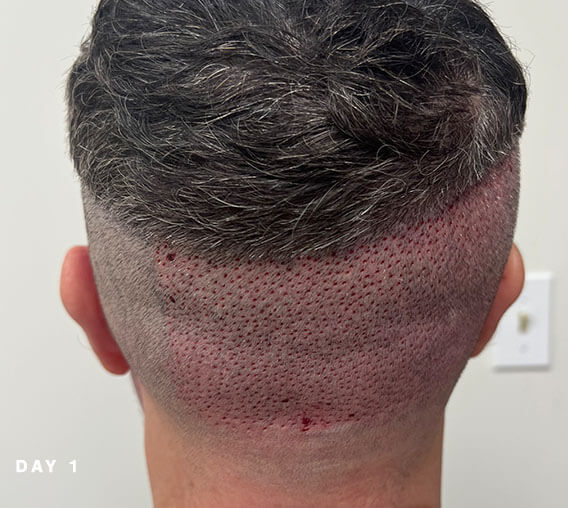
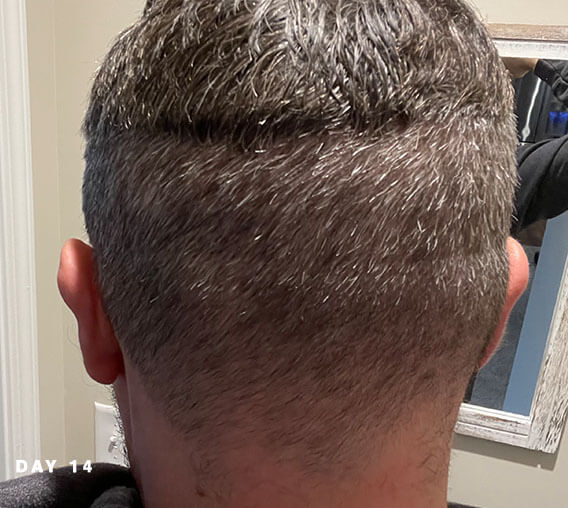
Note: At this time the donor area can be styled, or even buzzed, to your heart’s content, as long as all scabs have healed and fallen off before you proceed.
Growth in the Recipient Area
We mentioned shock loss above. While the donor area is not affected by it, the recipient area is. Approximately 4-5 days after the procedure, your newly transplanted facial hair will begin to shed. Do not be alarmed. This does not mean that the implanted follicles have not taken to their new location. It just means that the natural cycles of shedding and re-growth have begun. The shock loss causes the hair shafts to fall out and enter a dormant phase. The next phase is the so-called telogen resting phase and takes from 2 to 2.5 months. Not all hair falls out and rests at the same time. This is a process over time, meaning your recipient area may look patchy for a few months.
For most beard patients, for whom patchiness is typically the reason for a transplant in the first place, this is no big deal. You will simply continue to look patchy for a while longer, even after you have had your beard transplant.
Below you can see Nate’s 2-week recovery of the recipient areas, showing his frontal, right side, and left side views:
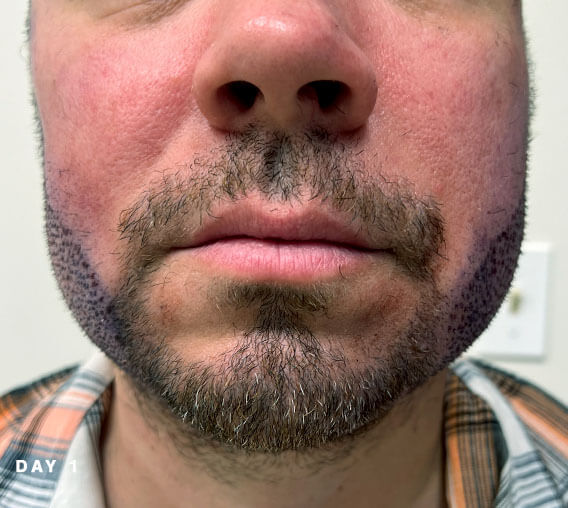
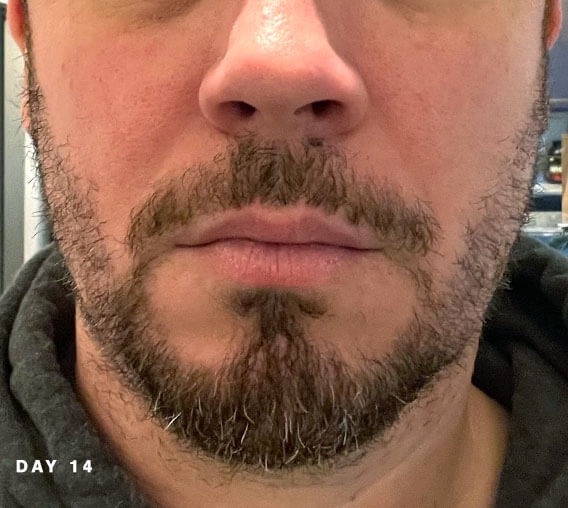
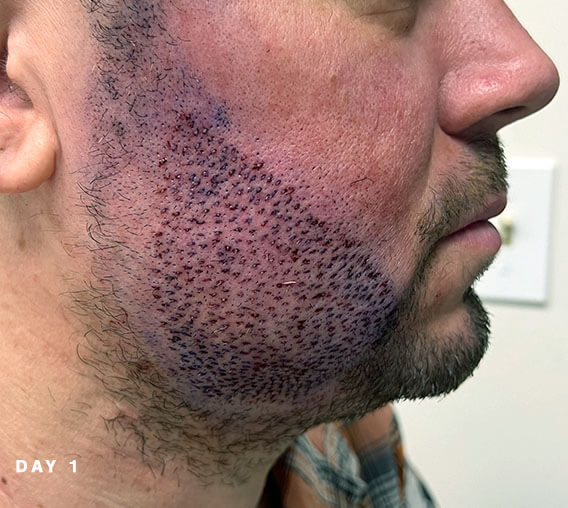
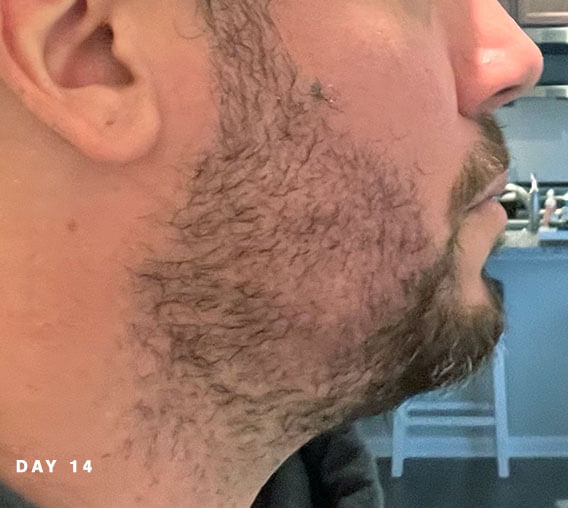
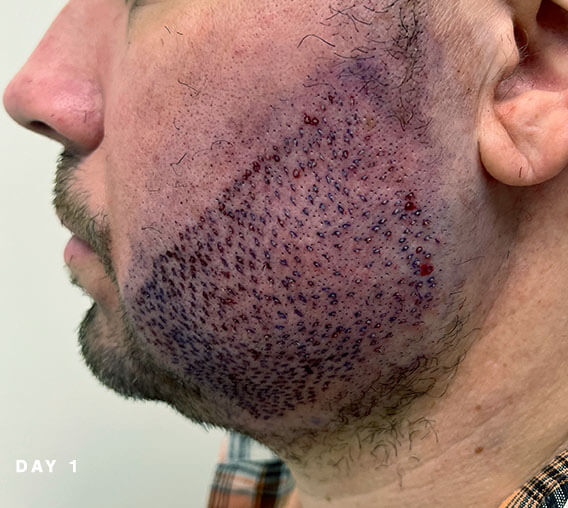
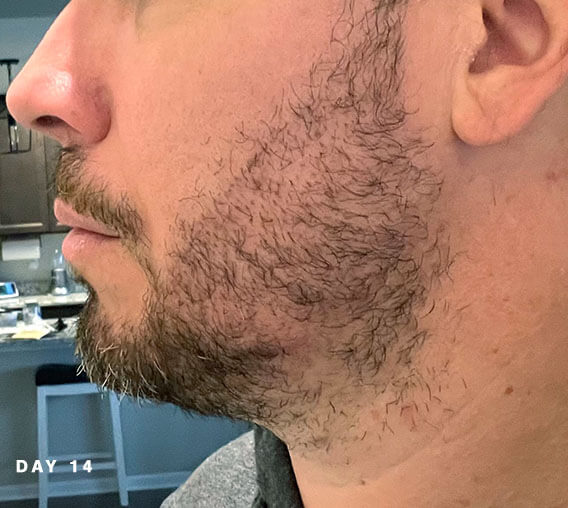
Note: As you can see, each insertion point will leave a tiny blood dot that will form a hardened scab that will flake off once you’re able to wash without restrictions (you’ll be given detailed recovery instructions after your procedure). You will also note that the patient experienced some swelling in the aftermath of his procedure, which is completely natural. Swelling typically subsides within a few days, and can be kept in check by keeping the head elevated while sleeping for the first week, as well as observing other hair restoration recovery tips.
As mentioned, shock loss can happen on a different timeline for everyone. Some patients experience it earlier, and some later. And for some, it blends in so seamlessly that their results look amazing after the first two weeks, and simply continue to thicken after that.
Shown below are the 2-week results for Levi, another Hair Doctor patient who travelled to Nashville all the way from Idaho to receive a 2,000 graft beard transplant.
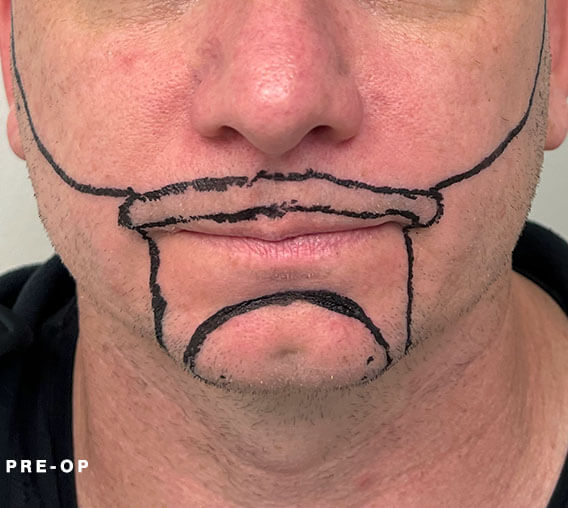
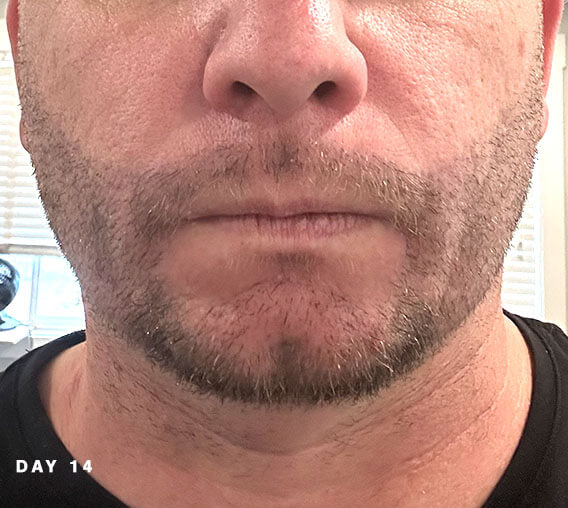
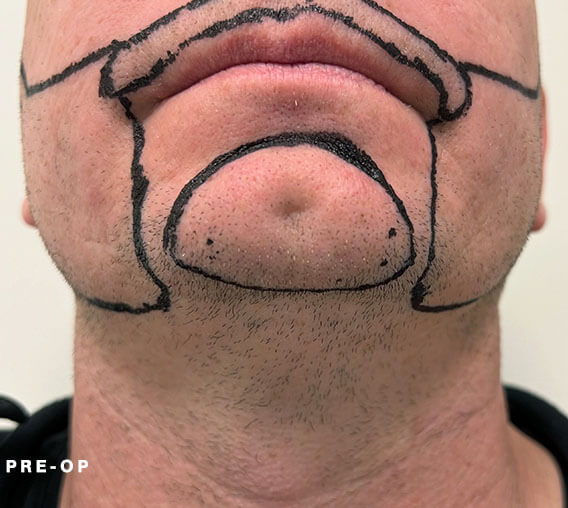
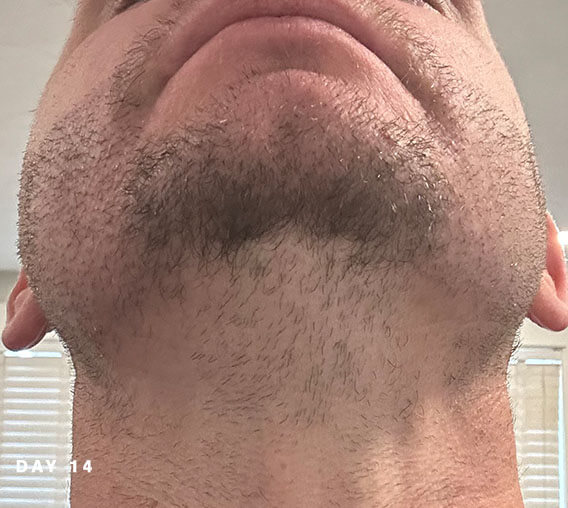
Levi was very impressed with the professional service and already expects that “the results are going to be phenomenal!” We can’t wait to check in with him at his 6-month mark to see how this expectation has panned out.
3-6 Months After Beard Transplant
After the immediate recovery in the first 2 weeks, the remainder of the first three months will admittedly be the most frustrating phase of your beard transplant recovery, with most patients not experiencing much change at all. Then, during month 3, new hair will grow in during the so-called slow-growth stage. Now it is time to get excited about seeing your new beard grow a little bit more every day! By month 6, most patients post very respectable results.
See our patient Nate below. At this point he’s only halfway through his growth, meaning more fullness is expected by 12 months. Nevertheless, he is already very pleased with the look of his beard. He “highly recommend(s) Nashville Hair Doctor and their team to anyone looking for a beard transplant such as myself!”
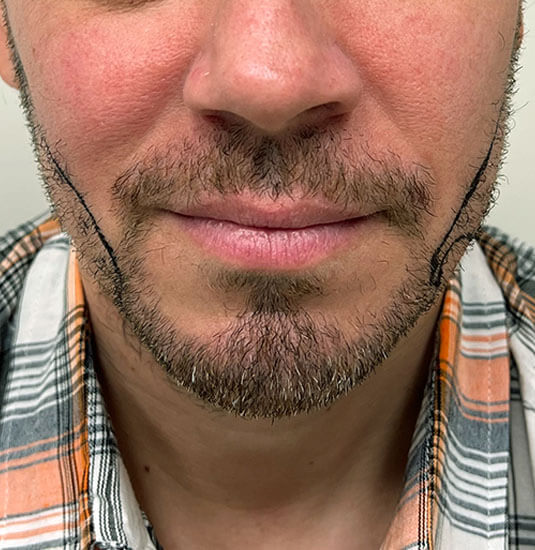
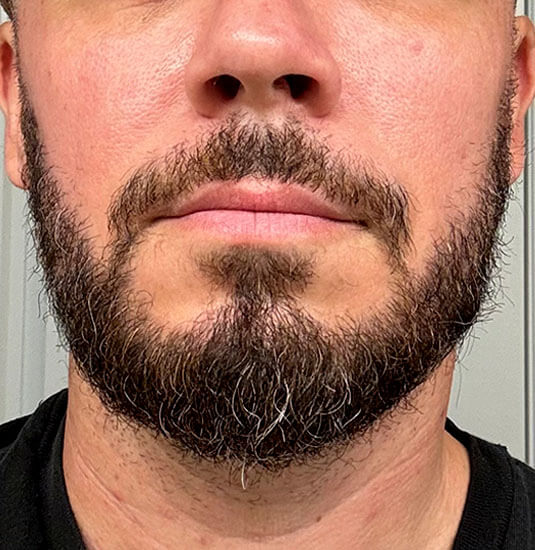
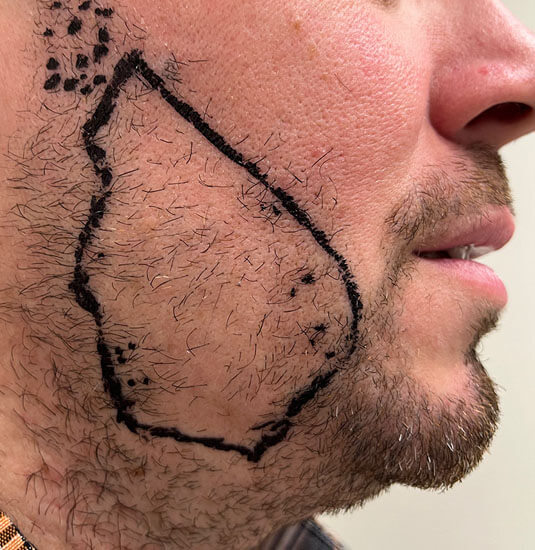
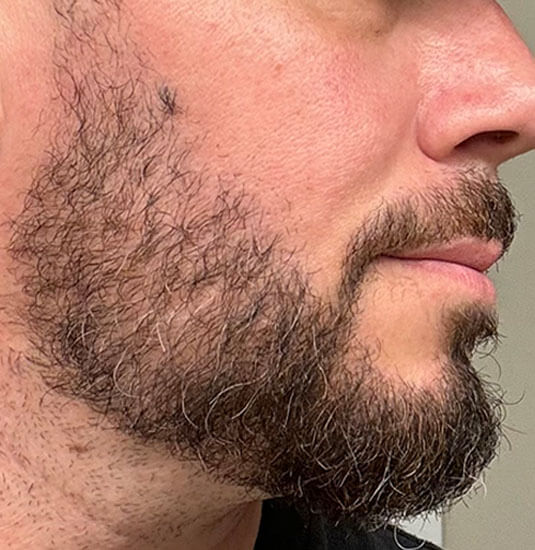
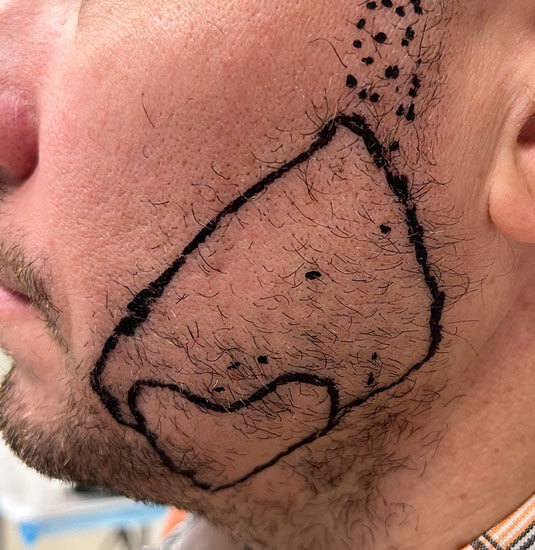
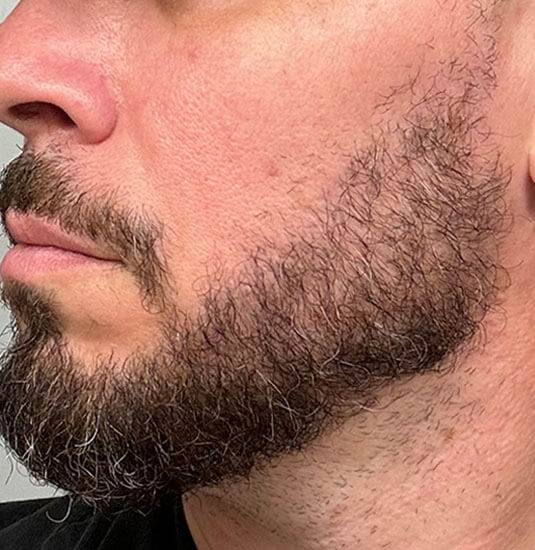
6-12 Months After Beard Transplant
Your facial hair will continue to thicken over the course of the next 6 months, allowing any remaining patches to fill in and for your beard to look lush and full. After 12 months, we consider your hair transplant recovery to be complete, and typically schedule an in-office follow-up visit to measure results. If an in-person visit is not feasible, we typically ask for an email with your after pictures so that we can give you a detailed assessment.
Louisville Hair Doctor patient Zac had very specific goals: a thicker beard overall and new coverage under his nose and where the mustache connects to chin and cheeks. Below are shown 11-month results for his 1,200 graft beard transplant:
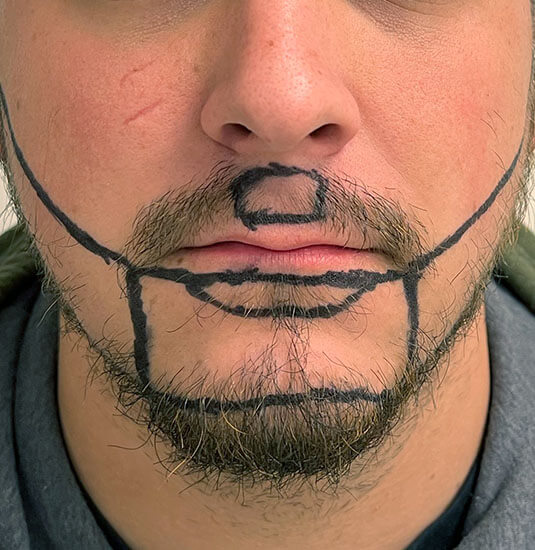
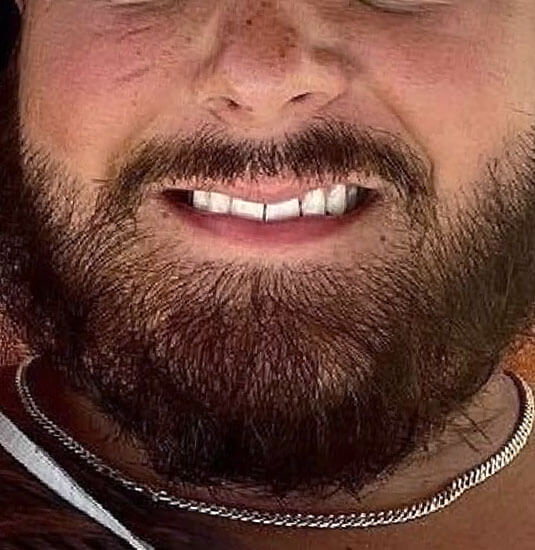
Zac’s dark facial hair allowed him to achieve a nice full beard with just 1,200 grafts. To illustrate the difference in outcomes depending on hair color, see below the 12-month results for Nashville Hair Doctor patient Fred. He had a 2,100 graft beard transplant, but because blond beards will always look slightly less striking in the after pictures, the difference may look more subtle than what the graft count actually achieved.
Nevertheless, Fred is very pleased with his results. Given his sparse growth before his beard transplant, he has filled in very nicely at 12 months. He drove 11 hours from out of town for his procedure because he felt that “Nashville Hair Doctor was the best fit” due to its numerous before-and-after pictures and professional website.
Fred is happy with his results and planning to add a second procedure for his goatee area.
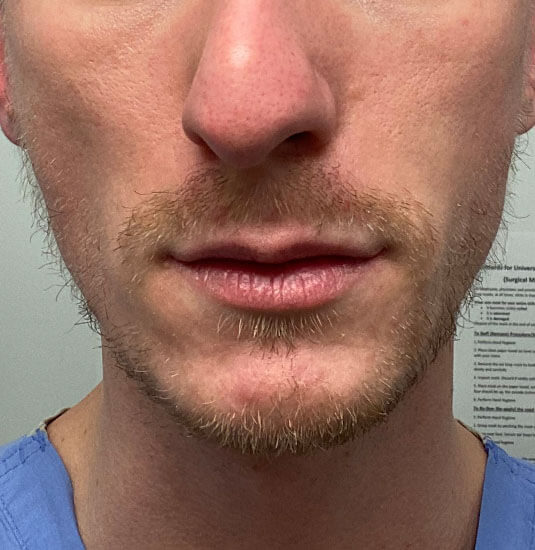
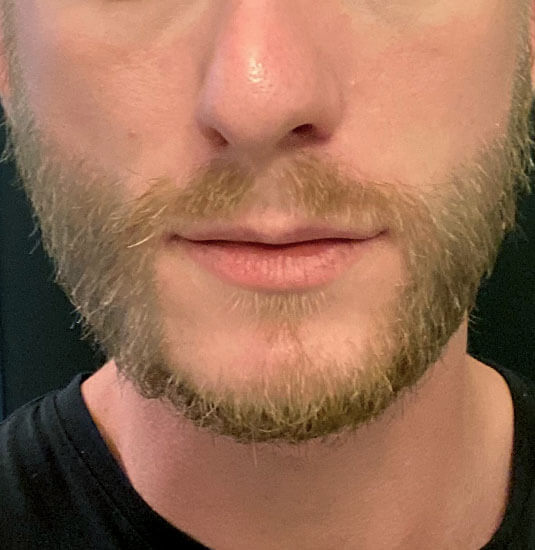
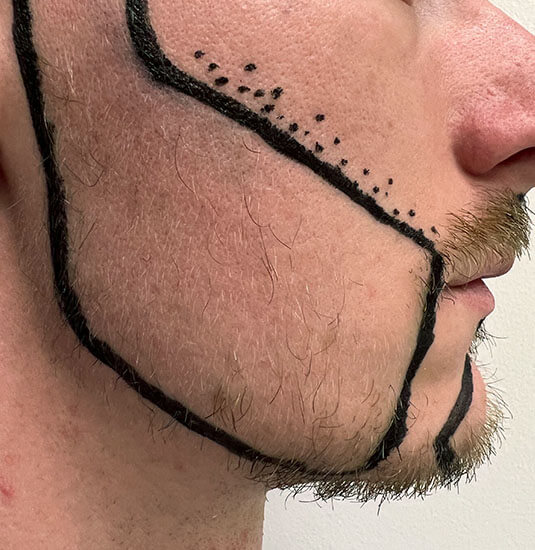
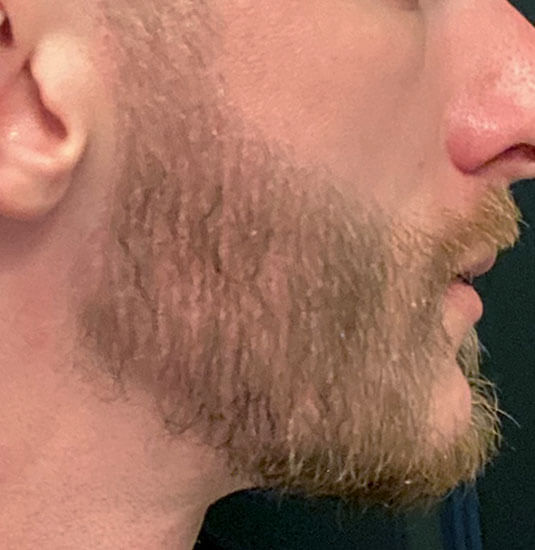
Please note that growth rates differ from person to person. For many patients, growth and thickening continues until 14-15 months after their procedure. It’s also worth nothing that younger patients typically see faster results than older patients.
We hope this has helped you understand what to expect from an FUE beard transplant. If you’re ready to get started, request your free quote from us today! If you’re not located near our Nashville, Memphis, or Louisville location, ask us about our out-of-town travel discount.
